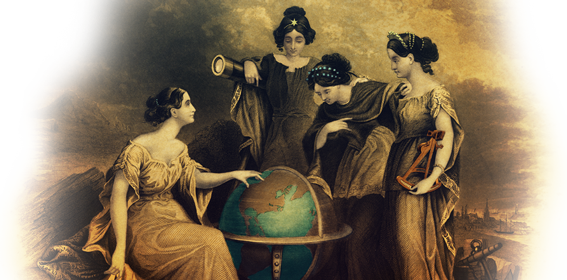Continental Identities
These “image essays” gather together striking images on the same theme from across the books in the exhibit.
In dividing up the world into a set of continents, American geography books affixed racialized identities to each of the five “continents.” “America” itself was associated with Native Americans and thus depicted as one of the lesser continents, comparable to Asia, Africa, and Oceanica. White American readers were meant to identify with the supposed superiority of “Europe” even though the United States was on the other side of the Atlantic Ocean.
Hover over any image to see source information; right click on any image to see a larger version; look under Research Resources for guides to all images in the digital exhibit.















